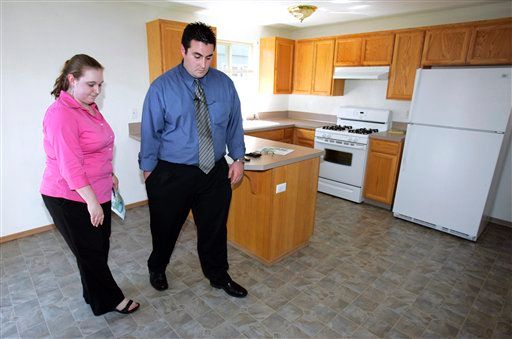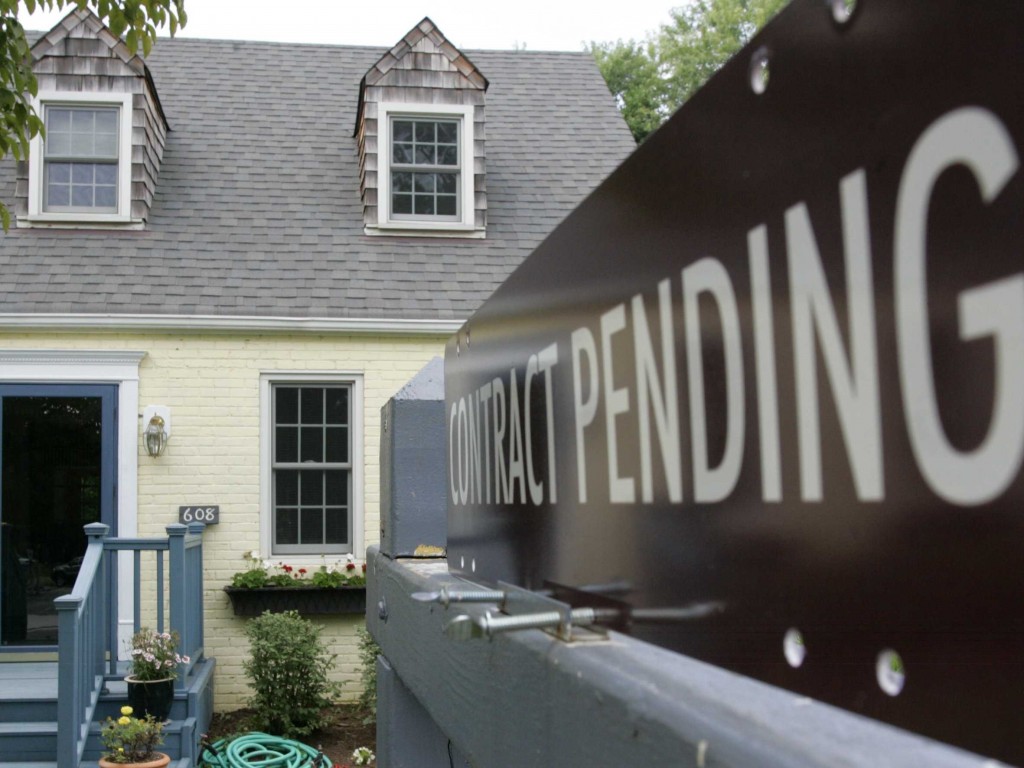FHA mortgage loans no longer best option after rule change
Originally published: November 22, 2013 12:06 PM
Updated: November 24, 2013 7:59 AM
By POLYANA DA COSTA Bankrate.com
Photo credit: AP | First-time home buyers Ben and Chantle Brubaker check out dining room space while viewing a house for sale. (July 6, 2007)
The most popular type of mortgage for buyers with low down payments keeps getting pricier and less appealing as more buyers question whether it’s still worth getting a FHA loan.
The mortgage insurance premium on loans backed by the Federal Housing Administration has nearly tripled since 2008. A few months ago, the FHA changed its rules to require borrowers to pay for mortgage insurance for the life of the loan.
“FHA loans really used to be a first option for homebuyers with a low down payment,” says Scott Schang, a branch manager for Broadview Mortgage Katella in Orange, Calif. “Now, I see people doing them because they have to and not because it’s their first option.”
The FHA allows buyers to get a mortgage with a down payment as low as 3.5 percent. The underwriting requirements to qualify for a FHA loan generally are less stringent than for conventional loans. But after the recent change and the numerous fee increases, FHA loans are generally not a borrower’s best mortgage option, Schang says.
Historically, the purpose of FHA loans was to help low-income buyers afford homes. During the subprime boom from 2003 to 2007, less than 10 percent of the purchase loans being originated each year were backed by the FHA.
After the financial crisis of 2008, when mortgage standards tightened, more borrowers and lenders turned to these easier-to-get loans. About 40 percent of purchase loans being originated by the end of 2009 were backed by the FHA, according to the U.S. Department of Housing and Urban Development’s latest annual report to Congress. It dropped to about 26 percent at the end of last fiscal year.
As demand for FHA loans grew, HUD tried to shore up the FHA’s insurance fund through a series of hikes in mortgage insurance premiums. The latest increase was in April.
FHA borrowers are charged an annual mortgage insurance premium of up to 1.35 percent of the average outstanding balances of their loans. The fee is added to the borrower’s monthly mortgage payment. The FHA also charges a 1.75 percent upfront fee when the borrower gets the loan.
A borrower getting a $200,000 loan, after making a 3.5 percent down payment, pays $225 per month in FHA mortgage insurance, plus an upfront fee of $3,500. Say you keep that mortgage for 10 years before you sell or refinance — that adds up to about $30,000 in mortgage insurance fees.
That’s substantially more than what a borrower would pay for private mortgage insurance on a conventional loan, which doesn’t have an upfront fee. The mortgage insurance premium on a conventional mortgage can be less than half of FHA’s insurance, depending on the borrower’s credit, according to estimates from mortgage insurance company United Guaranty.
“A conventional loan generally is less expensive for borrowers in almost all cases,” says Brian Gould, chief operating officer for United Guaranty, a mortgage insurer.
Homebuyers normally opt for FHA loans because they don’t have enough money saved for the 5 percent minimum down payment that most conventional loans require. But even those homeowners should explore their opportunities, including down payment assistance programs, says Rob Chrane, president of Down Payment Resource.
Chrane says there are various programs offered by states’ housing finance agencies and city or county agencies that buyers often overlook. They tend to think they make too much money to qualify, when in reality, many of these programs are available to moderate-income families as well, Chrane says.
“I can’t say everyone would qualify, but by the same token, the income limits for these programs are not just strictly to low-income households,” he says. “They can range anywhere from 80 percent of area median income up to 120 percent of median income.”
And if you find a lender willing to offer conventional loans with less than 5 percent down, mortgage insurance won’t be an issue as some mortgage insurance companies are willing to insure loans with as little as 3 percent down.
Although there are alternative solutions for borrowers with low down payments, some borrowers are stuck with a FHA loan for a different reason, one that can’t be easily fixed. Their debt-to-income ratio, or their monthly debt obligations compared with their income, is too high for a conventional mortgage. In lender lingo, the debt-to-income ratio is known as DTI.
“I’d worry less about the down payment and more about the DTI,” Schang says. “That seems to be the deciding factor on half of our deals.”
Conventional mortgages generally require borrowers to have debt-to-income of 45 percent or less, while the FHA allows borrowers to spend up to 56 or 57 percent of their income on their monthly obligations, such as credit card payments, student loans and car loans, he says.
“There’s a huge difference there,” he says. “Somebody who has less money to spend at the end of the month is going to get stuck with FHA because that’s their only option.”





